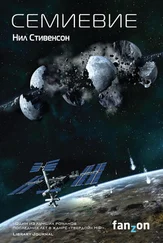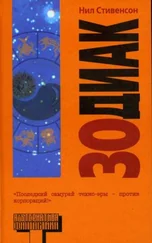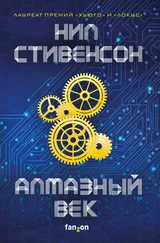Fahd wanted to show her something connected with the Line, something that must be climate-related but that was meant to be kept under wraps.
And there had been that stinger at the end: “ we control the airspace,” with the emphasis on “we.” Kind of an obvious statement. Of course Saudi Arabia controlled Saudi Arabian airspace. Why bother even pointing it out?
Because he was emphasizing a contrast between the Saudis, and someone else who didn’t control the airspace. Probably T.R. Who had designed his whole system to punch bullets straight up through airspace he didn’t legally control. If you wanted to do what T.R. was doing, and you didn’t have to worry about the FAA shutting you down, what would you come up with in place of giant guns?
From the plane’s cruising altitude over the barren mountains of the Sinai, it was just barely possible to make out the two splayed prongs of the Red Sea curving along the horizon to right and left. The one to their right was the Gulf of Suez, visibly congested with shipping even from this distance, the air above it stained with their sooty exhaust. A good many of those huge container ships were, she knew, bound to or from Maasvlakte, the only port capable of accommodating them. The one to the left was the Gulf of Aqaba, running up the Sinai’s eastern shore, separating Egypt from Saudi Arabia along much of its length. It was less busy because it was a dead end. The Israelis and the Jordanians had footholds at its northern terminus and used it as a shipping outlet to the Red Sea and points east.
Just south of there, the Line was anchored to the eastern shore of the Gulf of Aqaba on Saudi territory. From the waterfront it cut straight across the desert for more than a hundred miles. From the looks of it, the spine of the city—a pair of tunnels that ran its whole length, whisking people and cargo from one end to the other in high-speed maglev trains—was largely complete. Along most of its length it was just a faint scar on the desert where they’d backfilled lifeless and bone-dry earth over the completed tunnels. The beginnings of train stations and settlements were tidily spaced along its length. The far eastern end of it, 170 kilometers away on the other side of some mountains, she only glimpsed. But in that glimpse she saw neat phalanxes of black rectangles marching across the desert: photovoltaic panels taking advantage of the kingdom’s virtually infinite supply of sun-battered land. Much easier to see, since the airport lay near the Line’s western end, were the port facilities. There were two Chinese ships unloading and another waiting its turn out in the gulf, spewing a plume of soot into the languid, sunny air. In contrast to the ships at Rotterdam, which were a colorful, random mosaic of differently logotyped containers, these were virtually monochromatic. All the containers, with a few exceptions, were yellow, with a green logo. They were all, she could guess, carrying photovoltaic panels or related equipment from the same supplier, and they were all destined for the blank space on the map at the opposite end of the Line.
The plane landed itself adroitly. The weird ducted engines could vector their thrust, and so it didn’t need a lot of runway, especially when the hydrogen tanks were nearly drained. Formalities on the ground were nonexistent. That was only in part because she was a royal being greeted on the tarmac by a prince. The Line was supposed to have some kind of transnational status, free of the visa requirements and so on that made travel to the rest of Saudi Arabia burdensome.
The prince got the princess into an ice-cold Bentley as soon as he could, then surprised her by climbing in opposite her. Apparently they were going to dispense with the pretense he had observed on Vadan of having men and women travel in separate vehicles. Or maybe he was just running low on Bentleys. Their apparent destination was not far away: a colossal but nondescript hangar on the other side of the airport’s web of runways.
“Did you see the container ships?” Fahd asked, as they dodged around an incoming hydrogen tanker and set a course along the edge of a taxiway.
“Yes, clearly the Chinese have taken an interest!” In other company, she might have added while Western companies were sleeping on it but thought it better not to.
Fahd made a faint grimace and tossed one hand as if shooing something away. “We are buying what they are selling, no more,” he said. “Chinese aid comes at a high price—a price we don’t need to pay.”
“How much of the Empty Quarter are you planning to pave with photovoltaics?”
He leaned forward, elbows on knees. “We have grown rather attached to the practice of selling energy for piles and piles of money, and we intend to continue it long after we have run out of oil. To be blunt, we will install enough photovoltaics to alter the climate.”
She nodded. “Those panels are going to keep a hell of a lot of CO 2out of the atmosphere!”
“Yes, but that’s not what I meant.”
“Oh?”
“The desert has high albedo for the most part—sunlight bounces back from the light-colored soil and returns to outer space where it cannot warm the planet. Solar panels, on the other hand, are dark. The whole point of them is to absorb, not reflect, sunlight. They get hot. Hotter than the light sand that they are covering. Convection grows more powerful as hotter air rises with greater force. This changes the weather directly.”
“Have you modeled it?”
“No, but those guys have.” Fahd gestured toward a row of unmarked mobile office trailers huddling in a narrow strip of shade along the north wall of the huge hangar. What few windows they had were covered with mirrored film. Rooftop air conditioners shot plumes of heat into the air.
“Who are ‘those guys’?”
“Israelis.”
And so what she was expecting—completely illogically—was that the hangar would turn out to be full of racks stuffed with computers, all chugging away on climate simulations.
But no. The Israelis didn’t need to do that here. The hangar turned out to be occupied by a single enormous airplane. A type she had never seen before. It was complete, just in the sense that two wings and a tail were attached to its fuselage, but it was imprisoned in a web of scaffolding. Workers in hard hats and high-vis vests were busy here and there. Not a lot of workers and not super busy. This was not some mid-twentieth-century assembly-line operation. It felt more like one of those facilities where space rockets were meticulously pieced together.
And yet the overall lines of the giant airplane were not at all rakish or science fictiony. It looked like a child’s model, scaled up. The wings, which were extraordinarily long, stuck straight out from the sides. Nothing was swept back, nothing optimized for amazing speed or maneuverability. It really looked like a sailplane—a glider. But it had engines.
A hard-hatted man with an East African look about him was waiting behind the wheel of a golf cart. Saskia was a bit sick of being whisked around from place to place in vehicles controlled by others. She was a pilot for a reason. In the Netherlands, in front of cameras, she’d have made a point of walking. But . . . when in Rome. After donning the inevitable pair of safety glasses, she and Fahd were treated to a slow pass down one side of the plane and up the other.
“If you were anyone else, I would give you a laborious explanation of what this is,” said Fahd, as the golf cart swung wide around the slender, exquisitely sculpted tip of one wing. “But since it’s you . . .”
“It’s modeled after a U-2 spy plane,” Saskia said. “Those, in turn, were modeled after gliders. It is designed to operate at extremely high altitudes—seventy or eighty thousand feet. The thin air makes it tricky to design and even trickier to fly. It’s probably not even stable unless there are computers in the control loop.”
Читать дальше

![Нил Стивенсон - Криптономикон [litres]](/books/23868/nil-stivenson-kriptonomikon-litres-thumb.webp)








![Нил Стивенсон - Лавина [litres с оптимизированной обложкой]](/books/414066/nil-stivenson-lavina-litres-s-optimizirovannoj-ob-thumb.webp)
